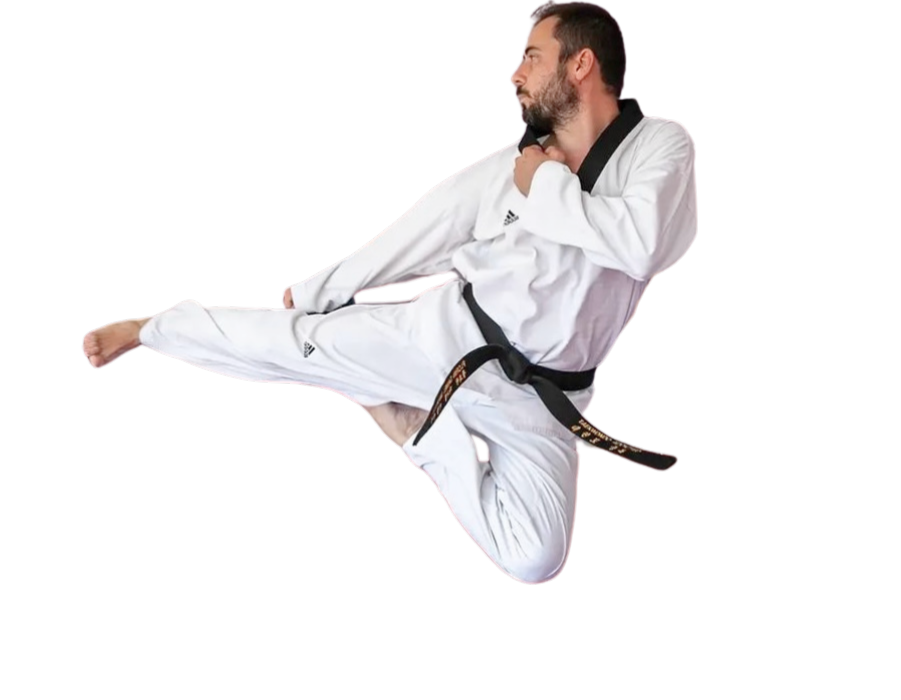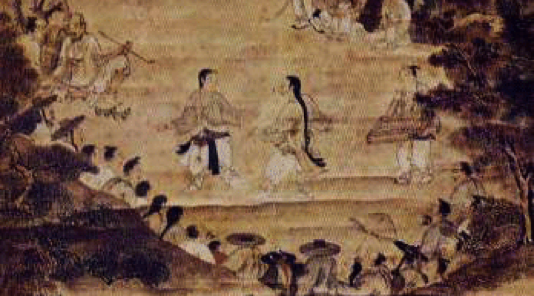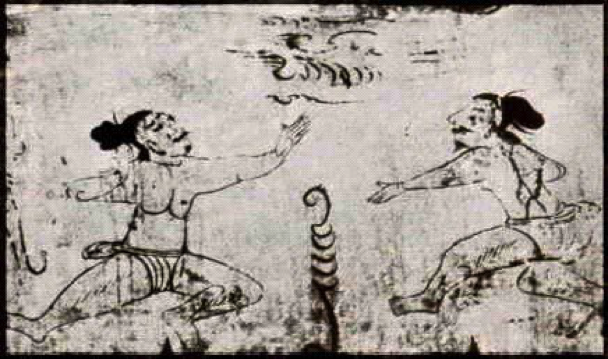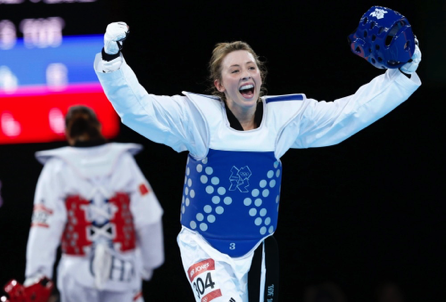HISTORY

MARBELLA
TAEKWONDO
ACADEMY
A BLACK BELT IS ONLY A WHITE BELT THAT NEVER GAVE UP
A Brief History of TKD
In ancient times people had no means other than the bare hands and body to defend themselves; so they naturally developed the bare – hand fighting techniques. Even at times when arms were developed as defensive or offensive means, people continued to enjoy the bare-hand fighting techniques for the purpose of building physical strength as well as showing off through matches at rituals of tribal communities.
TKD – Ancient Times
Man by nature has instinct to preserve his own life as well as his race, and therefore engages in physical activities either consciously or unconsciously. Man cannot do without physical motions that he grows and developed on them, regardless of time and space. In ancient times people had no means other than the bare hands and body to defend themselves; so they naturally developed the bare-hand fighting techniques. Even at times when arms were developed as defensive or offensive means, people continued to enjoy the bare-hand fighting techniques for the purpose of building physical strength as well as showing off through matches at rituals of tribal communities.
In the early days of the Korean peninsula, there were three tribes, each enjoying warrior’s martial art contests during the ritual seasons. At the time, people learned techniques from their experiences of fighting against the beasts whose defensive and offensive motions were also the subject of analysis. It is believed that this was exactly the true grounding of today’s Taekwondo, which names have descended from “Subak”, “Taekkyon” and so on.
In the latter part of ancient times on the Korean peninsula, three kingdoms were rivaling among them for the hegemony. They were Koguryo, Paekje and Shilla all indulged in growing national strength with trained warriors. Therefore, the Korean history tells that there were military personalities among the well-known prominent national leaders of the three kingdoms, which proves the military tendency of ruling hierarchy.
As a result, youth warriors were organized, such as “Hwarangdo” in Shilla and “Chouisonin” in Koguryo, which both adopted martial art training as one of the important subjects of learning. A known martial art book of the days, called “Muyedobo-Tongji” wrote “Taekwondo is the basis of martial art, enabling one to build strength by using the hand and foot freely and training arms and legs as well as the body to adaptable to any critical situations,” which means Taekwondo was already prevalent in that age. Thus, it can be easily assumed that Taekwondo was originated from the days of tribal communities on the Korean peninsula.
Shilla kingdom founded in B.C. 57 on the southeastern part of Korea, and Koguryo founded in B.C. 37 on the northern part of Korea along Yalu river, both made great efforts to raise their youngsters into strong warriors called “hwarang” and “sunbae” respectively, certainly with Taekwondo as one of the principal subjects of physical training.
Koguryo was founded on the northern part of Korea, surrounded by hostile Han [Chinese] tribes in the north. Therefore, in its early days, the kingdom organized a strong warrior corps called “Sunbae” in its attempt to consolidate power.
According to the scholars, a man of virtue who never recoils from a fight means “sunbae”, which is a member of the warrior corps. Later, the chronicle of the Old Chosun Dynasty described the lift of Koguryo days, saying; “people gathered on march 10 every year at a site of ritual, where they enjoyed a sword dance, archery, Taekkyon contests and so on,” implying that Taekkyon was one of the popular events for the ritual in the Koguryo days. It also said “sunbae” lived in groups, learning history and literary arts at home and going out to construct roads and fortresses for the benefits of society, always devoting themselves to the nations.
Therefore, it was natural that Koguryo put the priority of interests on the Taekkyon which was the basis of martial arts, as can be proven by the wall paintings discovered at tombs of Koguryo days. A mural painting at the Samsil tomb shows two warriors engaged in a face-to-face match in Taekkyon stance, and a third at the same tomb shows the scene of Korean wrestling bout [Ssireum], clearly distinguishing it from Taekkyon. It can be assumed from the painting of Taekkyon match that the dead were either a Taekkyon practical or the subject of condolence with dances and martial art.
The Kingdom of Shilla was founded on the southeastern part of the Korean peninsula where there were no immediate threats from outside, but along with the birth of Paekje Kingdom on its west flank and the start of invasions by Koguryo from the north, Shilla was impelled to arm itself with development of martial arts.
In fact, “hwarangdo” is the typical example of Shilla’s martial arts, which is an assimilation of Koguryo’s “sunbae” system. The youth group hwarangdo were well trained with the senses of filial piety, loyalty to the kingdom and sacrificial devotion to society to become important personalities for the rein of the kingdom. Notable among them were Kim Yu-Shin and Kim Chun-Chu that made definite contributions to the unification of those three kingdoms.

The chronicle of Old Chosun described the life of hwarangs, members of hwarangdo: “hwarang were selected by the kingdom through contests and, after selection, they lived together in a group, learning, exercising subak, fencing and horse-riding, and sometimes enjoyed various games of communities, working on emergency aids and construction of fortresses and roads, and they were always ready to sacrifice their lives at the time of war.”
Hwarangs were particularly influenced by the Buddhistic disciplines and therefore the bronze statues of a Kumgang Yoksa [a man of great physical strength] currently exhibited at the Kyongju Museum clearly indicate that martial arts were practiced at temples by showing a strong man’s bare-hand defensive and offensive stances. Especially the shape of a fist shown on the statue of Kumgang Yoksa exactly resembles that of a “jungkwon” [proper fist] in the contemporary term of Taekwondo. The statue also shows “pyon jumok ” [flat fist] and the use of legs, which are seen in today’s Taekwondo.
It is really noticeable that in the Shilla epoch the terms “subak” [hand techniques] and “taekkyon” appear together, signifying that both hand and foot techniques were used in martial arts as shown in today’s Tae kwon do.
As the art of taekkyon was popularized in Koguryo, it was also handed down to Silla, which is justified by the following points of view;
(1) “Hwarang”(or sonrang) in Silla has the same meaning with the word “sonbae” in Koguryo by indicating both the youth warrior’s corps from their etymological origins.
(2) Both Hwarang and sonbae had the same organizations and hierarchical structure with each other.
(3) According to historical, as sonbaes in Koguryo used to compete in taekkyon games at the time of their national festivals, Hwarangs in Silla also played taekkyon games (subak, dokkyoni or taekkyoni) at such festivals as “palkwanhoe” and “hankawi” , thus systematically developing the ancient fighting techniques into the taekkyon(or sonbae) as the basis of martial arts by around a.d.200. from the 4th century the Hwarangs took the takkyon lesson as a systemized martial art at their learning houses to make it also popularized among ordinary people so much so that their techniques were depicted on the mural paintings of ancient warrior tombs. Again, it is also true that taekkyon, coming down to Silla, was further developed into a school of martial art with the division of techniques, i ,e bare-hand techniques and foot techniques, which can be proved by the fact that both hand and foot techniques art clearly shown in the ancient sculptures buddlistic statues.
Ancient Times
The Koryo dynasty, which reunified the Korean peninsula after Shilla [A.D. 918 to 1392], had the Taekkyon develop more systematically and made it a compulsory subject in the examinations for selection of military cadets.
The techniques and power of Taekkyon grew to become effective weapons even to kill human beings. In the military, a pattern of collective practice, called “obyong-subak-hui [5 soldier’s Taekkyon play], was introduced so that it might be used in a real war.In the early days of Koryo dynasty, martial art abilities were the only required qualifications to become military personnel because the kingdom utterly needed the national defense capabilities after conquering the peninsula. A certain plain soldier who mastered Taekkyon techniques was promoted to a general, and young were invited to Taekkyon contests where the skilled ones were selected to become military officers. There were lots of other examples in which many Taekkyon – mastered youths were picked at contests, which is proof that Taekwondo sports was originated in that epoch.

The chronicles of Koryo dynasty writes: “at a power contest of Taekkyon techniques, Lee Yi- Min punched a pillar of the house with his right-hand fist, then some of the props of the roof were shaken. Another Taekkyon practicer had his fist pierce through the clay-wall.”Especially the kings of Koryo dynasty were much interested in “subakhui” [Taekkyon contest], making it a compulsory course of military training. Therefore, subakhui was also popular out for inspection tours in the villages.However, the Koryo dynasty in its latest years had gunpowder and new types of weapons available at hand, thus slowing down its support of martial as the folk games to be transmitted down to the modern Korea, Chosun. (Taekkyon explained in the Koryo history book)
Modern Times
In the modern times of Korea, the Chosun dynasty [1392-1910] the imperial Korea and the Japanese colonial rule until 1945, Taekwondo was rather called “subakhui” than “Taekkyon” and it suffered an eventual loss of official support from the central government as the weapons were modernized for national defense, although the subkhui was still popular in the early days of Chosun.
The Chosun dynasty was founded on the ideology of Confucianism, which resulted in rejecting Buddhism and giving more importance on literary art than martial art. Nonetheless, the Annals of Chosun Dynasty tells about the contests of subakhui ordered by local officials for the purpose of selecting soldiers and others ordered by the kings who enjoyed watching subakhui contests at the times of feasts. It was also ruled by the defense department that a soldier should be employed when he wins three other contestants in the subakhui bouts. However, as the government progressed, the government officials began to lay more importance on power struggles than on the interest of defense, naturally neglecting promotion of martial arts.Then, it was only in the days of King Jungjo after the disgraceful invasion of Korea by the Japanese [1592] that the royal government revived strong defense measures by strengthening military training and martial art practice. Around this period there was a publication of the so-called “Muyedobo-Tongji,” a book of martial art illustrations, which 4th volume entitled “hand-fighting techniques” contained the illustration of 38 motions, exactly resembling today’s Taekwondo poomsae and basic movements, although those motions cannot be compared with today’s Taekwondo poomsae, which has been modernized through scientific studies. Even under the Japanese colonial rule, some famous Korean writers, such as Shin Chae- Ho and Choi Nam-Sun, mentioned about Taekwondo, saying “present subak prevailing in Seoul came from the sunbae in the Koguryo dynasty,” and “subak is like today’s Taekkyon which was originally practiced as martial art but is now played mostly by children as games.”However, the Japanese colonial government totally prohibited all folkloric games including Taekkyon in the process of suppressing the Korean people. The martial art Taekkyon [Taekwondo] had been secretly handed down only by the masters of the art until the liberation of the country in 1945. Song Duk-Ki, one of the then masters testifies that his master was Im Ho who was reputed for his excellent skills of Taekkyon, “jumping over the walls and running through the wood just like a tiger”. At the time, 14 terms of techniques were used representing 5 kicking patterns, 4 hand techniques, 3 pushing-down-the-heel patterns, 1 turning-over-kick pattern and 1 technique of downing-the-whole-body. Also noteworthy is the use the term “poom” which signified a face-to-face stance preparing for a fight. The masters of Taekkyon were also under constant threat of imprisonment, which resulted in an eventual of Taekkyon as popular games.
Present Day
Upon liberation of Korea from the Japanese colonial rule after World War II, the Korean people began recovering the thought of self-reliance and the traditional folkloric games resumed their popularity. Song Duk-Ki, afore-mentioned master of Taekkyon, presented a demonstration of the martial art before the first republic of Korea president Syngman Rhee on the occasion of his birthday, clearly distinguishing Taekwondo from the Japanese Karate which had been introduced by the Japanese rulers.
Martial art experts began opening Taekwondo gymnasiums all over the country and after the end of Korean War [1950-1953] Taekwondo was popularized among the dan-grade black-belters within the country, also dispatching about 2,000 Taekwondo masters to more than 100 countries.
After all, following the nomination of Taekwondo as a national martial art in 1971, the present Kukkiwon was founded in 1972 to be used as the headquarters as well as the site of various Taekwondo competitions. Then a year later, in 1973 the World Taekwondo Federation was established. In 1973, the biennial World Taekwondo Championships was organized.
In 1984, Taekwondo was admitted to the Asian games as an official event. In 1975, Taekwondo was accepted as an official sport by the U.S Amateur Athletic Union [AAU] and also admitted to the General Association of International Sports Federations [GAISF], followed by the adoption of official sports event by the International Council of Military Sports [CISM] in 1976. The WTF became an IOC-recognized sports federation in 1980, making Taekwondo an Olympic sport. Then the adoption of Taekwondo as an official event was followed by the world games in 1981, the pan-American games in 1986, and finally by the Sydney 2000 Olympics in 1994 and then Athens 2004 Olympic Games in 2000. On November 29, 2002, the 114th IOC Session also confirmed the inclusion of Taekwondo in the Beijing 2008 Olympic Games.

